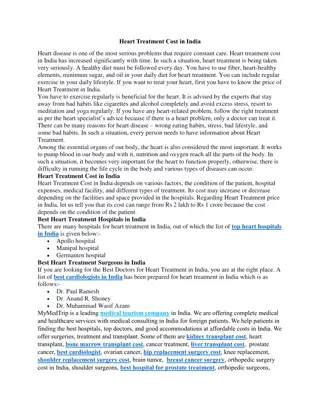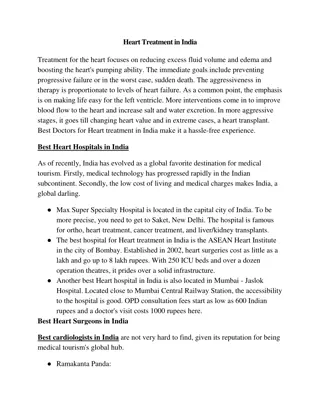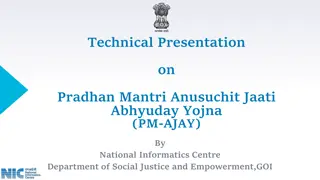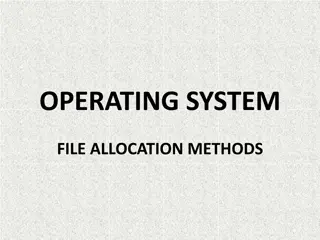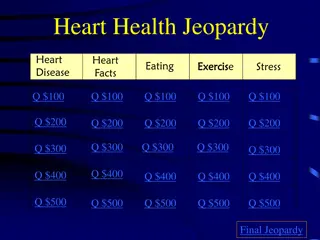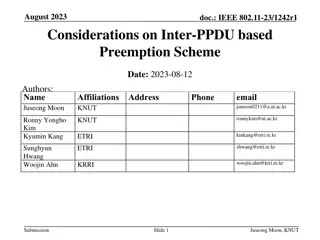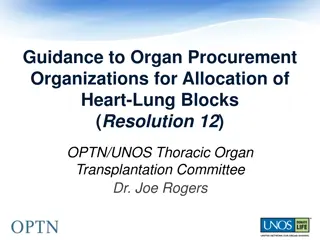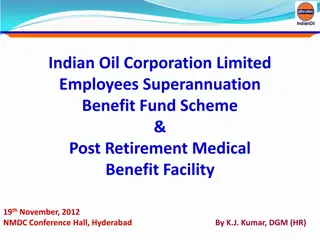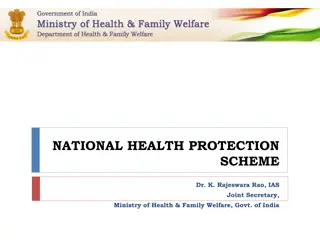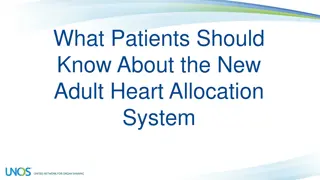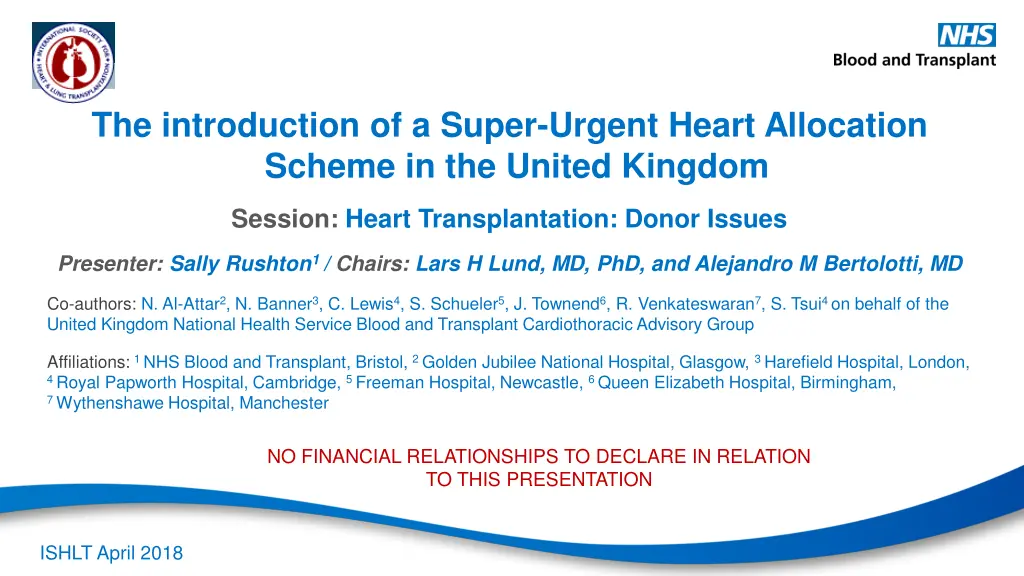
Super-Urgent Heart Allocation Scheme in the UK
Explore the implementation of a Super-Urgent Heart Allocation Scheme in the United Kingdom, addressing donor issues in heart transplantation. Insights from the UK National Health Service Blood and Transplant Cardiothoracic Advisory Group, along with key statistics and the 2016 Heart Allocation Sequence, provide a comprehensive view of the UK's heart transplant program from 2008-2018.
Uploaded on | 0 Views
Download Presentation

Please find below an Image/Link to download the presentation.
The content on the website is provided AS IS for your information and personal use only. It may not be sold, licensed, or shared on other websites without obtaining consent from the author. If you encounter any issues during the download, it is possible that the publisher has removed the file from their server.
You are allowed to download the files provided on this website for personal or commercial use, subject to the condition that they are used lawfully. All files are the property of their respective owners.
The content on the website is provided AS IS for your information and personal use only. It may not be sold, licensed, or shared on other websites without obtaining consent from the author.
E N D
Presentation Transcript
The introduction of a Super-Urgent Heart Allocation Scheme in the United Kingdom Session: Heart Transplantation: Donor Issues Presenter: Sally Rushton1 / Chairs: Lars H Lund, MD, PhD, and Alejandro M Bertolotti, MD Co-authors: N. Al-Attar2, N. Banner3, C. Lewis4, S. Schueler5, J. Townend6, R. Venkateswaran7, S. Tsui4 on behalf of the United Kingdom National Health Service Blood and Transplant Cardiothoracic Advisory Group Affiliations:1 NHS Blood and Transplant, Bristol, 2 Golden Jubilee National Hospital, Glasgow, 3 Harefield Hospital, London, 4 Royal Papworth Hospital, Cambridge, 5 Freeman Hospital, Newcastle, 6 Queen Elizabeth Hospital, Birmingham, 7 Wythenshawe Hospital, Manchester NO FINANCIAL RELATIONSHIPS TO DECLARE IN RELATION TO THIS PRESENTATION ISHLT April 2018
UK heart transplant programme, 2008-2018 Number on transplant waiting list Number of transplants 250 250 244 243 223 220 217 Non-urgent 198 198 198 195 200 200 181 179 Non-urgent 154 145 150 150 138 131 130 120 118 116 100 100 88 Urgent* Urgent* 50 50 40 29 31 23 24 21 14 15 8 5 0 0 2008-09 2009-10 2010-11 2011-12 2012-13 2013-14 2014-15 2015-16 2016-17 2017-18 Year 2008-09 2009-10 2010-11 2011-12 2012-13 2013-14 2014-15 2015-16 2016-17 2017-18 Year * Includes super-urgent from October 2016
2016 Heart Allocation Sequence Tier 1 New Oct 2016 Temporary MCS or imminent risk of death Super-urgent adults Ranked by waiting time, local area priority Adult donor sequence (95% of matching runs) Tier 2 Mainly in hospital, dependent on intravenous inotropes and/or with LVAD complications Urgent adults Ranked by waiting time, local area priority Urgent paediatrics Ranked by waiting time Tier 3 Other heart failure patients suitable for HTx Non-urgent patients Centre choice, local area priority
Comparison of patients outcomes on the transplant waiting list Number of patient registrations Median waiting time to transplant Waiting list mortality within 30 days 12m before 12m after 12m after 12m before 12m before 12m after 48% 53% 70 200 38% 186 47% Upper CL Median Lower CL 10 180 60 162 9 160 148 8 52 141 days 50 140 Number of patient registrations Days waiting 7 Number of deaths 2% 1% 120 40 6 15% 100 5 30 30 days 4 80 4 57 60 20 3 2 2 40 2 >3 years 10 1 9 days 1 20 0 0 0 0 Non-Urgent Urgent Non-Urgent Urgent Super-Urgent Non-urgent Urgent Non-urgent Urgent Super-urgent Non-Urgent Urgent Non-Urgent Urgent Super-Urgent
Comparison of patient outcomes after transplant 12m after 12m before 97% Non-urgent Super-urgent 95% Non-urgent 94% Log-rank p=0.9 Urgent 93% Log-rank p=0.5 Urgent 92% Number of transplants 33 89 37 159 Number of deaths 2 2 7 11 Number of transplants 30 134 164 Number of deaths 1 9 10 Non-urgent Urgent Super-urgent Overall Non-urgent Urgent Overall Conclusion: introduction of 2016 super-urgent tier has achieved its aim of prioritising the sickest on the list, without compromising outcomes





